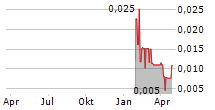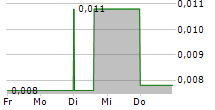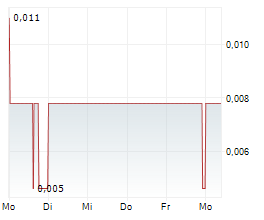
Vancouver, British Columbia--(Newsfile Corp. - May 7, 2024) - Atomic Minerals Corporation (TSXV: ATOM) ("ATOMIC MINERALS" or the "Company") ( is pleased to announce the results of a detailed analysis of stratigraphic and gamma ray logs from the historical oil well log data at the Dolores Anticline Project ("Dolores Anticline") in SW Colorado.
This initiative underlines the Company's commitment to integrating advanced geophysical techniques to refine its exploration strategies and enhance the geological understanding of its central uranium prospects.
"Utilizing historical gamma ray logs for a refined geological analysis at the Dolores Anticline enables us to pinpoint geological formations and evaluate their uranium potential with precision," remarked Clive H. Massey, President & CEO of Atomic Minerals. "This advanced technology bolsters our efforts in uranium exploration and optimizes our strategy for assessing our broad portfolio. We are particularly grateful for the support from the communities in Monticello and San Juan County, which is crucial as we advance our projects."
Gamma Ray Logs in Geophysical Evaluation
Atomic Minerals analyzed the stratigraphic logs or stratigraphic estimates in conjunction with the gamma ray logs from historic oil and gas holes drilled throughout the Dolores Anticline to zero in on the favorable Moss Back member of the Chinle formation. The Moss Back hosts the bulk of the Triassic uranium mineralization within the salt anticlines throughout the Paradox Basin within the Colorado Plateau, America's premier uranium mining district. The Chinle formation has produced 120 million pounds of U3O8 to date.1
A total of 93 Colorado oil and gas hole locations were found in the database and were analyzed: 21 holes were permitted but never drilled, 31 holes either did not have a gamma log or were cased through the Chinle, 1 was collared below the base of the Chinle and 1 was lost before intersecting the Chinle. Of the remaining 39 holes, 19 recorded anomalous gamma ray values associated with the suspected base of the Chinle formation, a success rate of almost 50%.
A review of the plan map of the western arcuate belt of the Lisbon Valley Anticline, the type location for the Chinle uranium deposits, shows the uranium occurred in distinct deposits along the 17 km long belt, some clustered and others widespread, most notedly with barren gaps within the deposit clusters.2
Uranium Projects in SE Utah / SW Colorado- A Rich Mining Heritage
Southeastern Utah / Southwesten Colorado hosts a number of prominent uranium districts for both Morrison and/or Chinle uranium deposits, with the majority of the Chinle deposits intimately associated with the salt anticlines. With a long history of uranium exploration, development and production and fully permitted uranium mill, this area of the Colorado Plateau is poised to take advantage of the current uranium boom and the recently announced tarrif on Russian uranium imports.
Community and Operational Insights in Moab and Monticello
Exploration activities at the SW US Projects are feasible throughout the year, albeit with some interruptions due to potential seasonal muddy conditions during the rainy season. The town of Moab, situated near the 10 Mile project and the town of Monticello near the Harts Point and Dolores Projects, provide a comprehensive array of essential services and infrastructure, from healthcare and education to retail and lodging. This supportive community backdrop ensures a steady supply of skilled labor and sufficient resources, such as power and water, to sustain continuous mining operations.
Dolores Anticline
As a result of the Dolores database thorough analysis, the Company is now laying out drill hole locations, guided by the oil and gas drilling, to allow commencement of the permitting process for summer drilling.
The Dolores claim group (SC claims) lies in San Miguel County, Colorado, on the northern end of the Dolores anticline and proximal to the southern end of the Uravan mineral belt. The Uravan (a contraction of uranium-vanadium) mineral belt produced 75.5 million pounds of uranium oxide and 331.8 million pounds of vanadium from the Salt Wash member of the Jurassic Morrison formation during the years between 1947 and 1979, from more than 1,200 mines.3 While these mining claims are located on the southern end of the Uravan, they were located in an area considered to be very favourable for the concentration of uranium mineralization in the Moss Back member of the Triassic-age Chinle formation and the Permian Cutler formation, as well as the Salt Wash member of the Morrison formation. Atomic Minerals' geological consultants have confirmed the presence of uranium mineralization in several prospects in the Dolores River Canyon, where the favourable Moss Back member has been exposed and appears to have a wide extent, which guided the location of the SC claim block.
In the late 1970s, widely spaced exploration drilling for uranium by the Hunt Oil Company and Newmont Mining Company confirmed the presence of the highly favourable Moss Back member of the Chinle formation on this anticlinal structure. Gamma ray logs of a number of these holes reported spikes within the Moss Back.
Sources
- Hall,S.M.; Van Gosen,B.S. and Zielinski,R.R. (2023). Sandstone-hosted uranium deposits of the Colorado Plateau, USA. Ore Geology Reviews 155. 39p.
- DahlKamp,F.J. (2010) Uranium Deposits of the World - USA and Latin America. Springer-Verlag Berlin Heidelberg. 499p.
- Chenoweth, W.L. (1981). The Uranium-Vanadium Deposits of the Uravan Mineral Belt and Adjacent Areas, Colorado and Utah. New Mexico Geological Society Guidebook, 32nd Field Conference. pp. 165-170.
The data disclosed in this news release are related to historical exploration and drilling results. Atomic Minerals has not undertaken any independent investigation of the sampling, nor has it independently analyzed the results of the historical exploration work in order to verify the results. Atomic Minerals considers these historical exploration and drill results relevant as the Company is using these data as a guide to plan exploration programs. The Company's current and future exploration work includes verification of the historical data through sampling and drilling.
Qualified Person
Mr. R. Tim Henneberry, P.Geo. (BC), an advisor to the Company, is the "Qualified Person" under National Instrument 43-101 responsible for the technical contents of this news release and has approved the disclosure of the technical information contained herein.
About the Company
Atomic Minerals Corp. is a publicly listed exploration company on the TSX Venture Exchange, trading under the symbol ATOM, led by a highly skilled management and technical team with a proven track record in the junior mining sector. Atomic Minerals' objective is to identify exploration opportunities in regions that have been previously overlooked but are geologically similar to those with previous uranium discoveries. These underexplored areas hold immense potential and are in stable geopolitical and economic environments.
Atomic Minerals' property portfolio contains uranium projects in three locations within North America, all of which have significant technical merit and or are known for hosting uranium production in the past. Three of the properties are located on the Colorado Plateau, an area which has previously produced 597 million pounds of U3O8; Three others are in the prolific Athabasca Basin region and nine uranium projects are located Northern Saskatchewan, encompassing a total exploration area of 6,495 hectares.
For additional information about the Company and its projects, please visit our website at www.atomicminerals.ca.
ON BEHALF OF THE BOARD OF DIRECTORS
"Clive Massey"
Clive H. Massey
President & CEO
For further information, please contact:
info@atomicminerals.ca
Neither TSX Venture Exchange nor their Regulation Services Provider (as that term is defined in the policies of the TSX Venture Exchange) accepts responsibility for the adequacy or accuracy of this release.
Forward-Looking Statements:
This news release contains certain statements that may be deemed "forward-looking" statements. Forward looking statements are statements that are not historical facts and are generally, but not always, identified by the words "expects", "plans", "anticipates", "believes", "intends", "estimates", "projects", "potential" and similar expressions, or that events or conditions "will", "would", "may", "could" or "should" occur. Although Atomic Minerals Corporation believes the expectations expressed in such forward-looking statements are based on reasonable assumptions, such statements are not guarantees of future performance and actual results may differ materially from those in forward looking statements. Forward-looking statements are based on the beliefs, estimates and opinions of Atomic Minerals Corporation management on the date the statements are made. Except as required by law, Atomic Minerals Corporation undertakes no obligation to update these forward-looking statements in the event that management's beliefs, estimates or opinions, or other factors, should change.

To view the source version of this press release, please visit https://www.newsfilecorp.com/release/208195
SOURCE: Atomic Minerals Corp.



